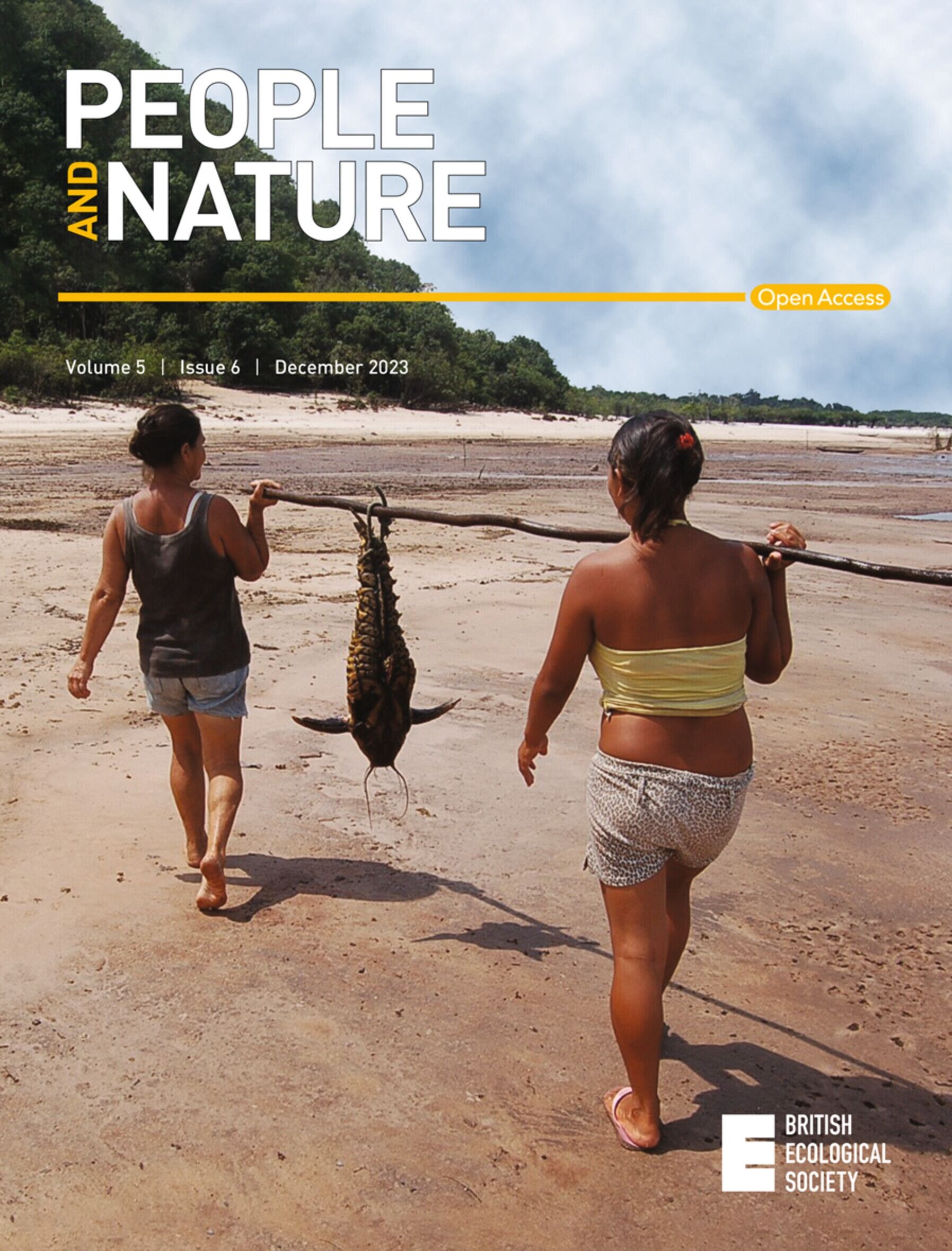Stakeholder consensus suggests strategies to promote sustainability in an artisanal fishery with high rates of poaching and marine mammal bycatch
IF 4.9
1区 环境科学与生态学
Q1 BIODIVERSITY CONSERVATION
引用次数: 1
Abstract
Abstract Illegal fishing for high value species in artisanal fisheries drives incidental catch and declines of marine mammals and other large vertebrates of conservation importance around the world. Engaging with stakeholders is essential to understand which strategies will be effective in motivating the development of more sustainable practices, and disengagement from illegal fisheries. Here we present the results of a Q study carried out in autumn 2018 with 50 stakeholders from the Caspian Sea coast of Dagestan (Russian Federation), including fishers illegally targeting sturgeon ( Acipenseridae ) and Caspian seals Pusa caspica , traders and fisheries managers. We assess viewpoints on biodiversity governance; illegal, unreported and unregulated (IUU) fishing; illegal wildlife trade (IWT) and conservation. Three distinct viewpoint groups emerged from a factor analysis, which we designated as ‘Nostalgists’, ‘Optimists’ and ‘Pessimists’. Nostalgists were concerned with decline in environmental quality, and emphasised a need for increased centralised involvement of authorities reminiscent of the old Soviet system. Optimists expressed support for a well‐regulated legal fisheries sector, while Pessimists were very aware of the negative impact of illegal fisheries and IWT, but felt they could not be controlled. Among all groups we found a strong desire for alternative livelihoods (ALs), improved sustainability and agreement on the potential effectiveness of marine protected areas (MPAs) and increased regulation, even if some stakeholders felt they were not achievable goals. We used our results to inform three workshops in which Dagestani fishers and fishery experts discussed potential conservation interventions, and the barriers to their implementation. Six action types were identified including enhanced law enforcement, increased regulation, protected areas, alternative livelihoods, reducing demand for sturgeon and seal products and the need for further research to guide policy development. This consensus suggests that communities are willing to reduce participation in illegal fishing given appropriate support. The socioeconomic factors driving illegal fisheries and bycatch for Caspian seals parallel those for other endangered marine mammals such as Vaquita Phocoena sinus and suggest that Q studies could be applied in other artisanal fisheries with high rates of marine mammal bycatch to help identify policy interventions supported by involved communities. Read the free Plain Language Summary for this article on the Journal blog.利益攸关方达成共识,提出了促进偷猎和兼捕海洋哺乳动物率高的手工渔业可持续性的战略
在手工渔业中非法捕捞高价值物种,导致世界范围内海洋哺乳动物和其他具有重要保护意义的大型脊椎动物的偶然捕捞和减少。与利益攸关方接触对于了解哪些战略将有效推动发展更可持续的做法和脱离非法渔业至关重要。在此,我们介绍了2018年秋季与达吉斯坦(俄罗斯联邦)里海沿岸的50名利益相关者进行的一项Q研究的结果,其中包括非法捕捞鲟鱼(Acipenseridae)和里海海豹(Pusa caspica)的渔民、贸易商和渔业管理人员。我们评估了生物多样性治理的观点;非法、不报告和不管制捕鱼;非法野生动物贸易(IWT)和保护。因子分析中出现了三个不同的观点群体,我们将其命名为“怀旧派”、“乐观派”和“悲观派”。怀旧主义者担心环境质量的下降,并强调需要加强当局的集中参与,让人想起旧苏联体制。乐观主义者表示支持监管良好的合法渔业部门,而悲观主义者则非常清楚非法渔业和内务贸易的负面影响,但认为它们无法控制。在所有群体中,我们都发现了对替代生计(ALs)、提高可持续性和就海洋保护区(MPAs)的潜在效力达成一致以及加强监管的强烈愿望,即使一些利益相关者认为这些目标无法实现。我们利用我们的结果为达吉斯坦渔民和渔业专家讨论潜在的保护干预措施及其实施障碍的三个研讨会提供了信息。确定了六种行动类型,包括加强执法、加强监管、建立保护区、替代生计、减少对鲟鱼和海豹产品的需求,以及需要进一步研究以指导政策制定。这一共识表明,在给予适当支持的情况下,社区愿意减少参与非法捕鱼。推动里海海豹非法捕捞和副渔获的社会经济因素与其他濒危海洋哺乳动物(如小头鼠海豚)的类似,这表明Q研究可以应用于其他海洋哺乳动物副渔获率高的手工渔业,以帮助确定相关社区支持的政策干预措施。在《华尔街日报》博客上阅读免费的《简明语言摘要》。
本文章由计算机程序翻译,如有差异,请以英文原文为准。
求助全文
约1分钟内获得全文
求助全文

 求助内容:
求助内容: 应助结果提醒方式:
应助结果提醒方式:


